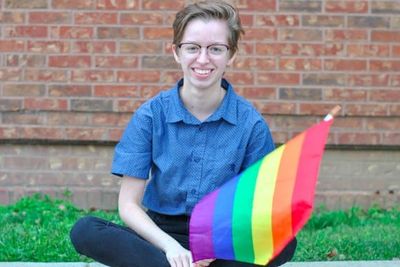“We take bullying very seriously and have a zero-tolerance rule. Your safety is our highest priority,” my principal announced. I felt a pain in my chest as I realized slowly that she should have added “but not if you are LGBTQ+.”
I walk the halls with disgusted glances being thrown my way. My experiences aren’t reflected in history classes. Many of my peers consider me abnormal, and it is 'normal' for slurs to be directed my way in the halls.
I feel invisible.
LGBTQ+ youth constantly face situations such as these, from the usage of slurs to demeaning conversations that sexualize LGBTQ+ identities.
When most think of harassment, they think of clear, overt physical or sexual violence.But harassment also includes subtler violences. Often, it comes in the form of microaggressions.
Microaggressions, a term coined in 1970, are subversive comments and actions that contain subtle discrimination. Because these comments are harder to identify, they are harder to address, and they allow folks to be open about their homophobia without risk of backlash.
Microaggressions include the usage of phrases like “That’s so gay,” “You’re pretty for a lesbian,” and “You don’t even look trans!” While these statements may seem small, these everyday occurrences lead to long-term health problems, including the deterioration of mental health. For LGBTQ+ students, this can manifest as declining student performance and/or chronic absenteeism.
In the newly released bi-annual National report on LGBTQ+ students’ experiences in schools conducted by GLSEN, it was found that, for the first time following years of decline, there has been a rise in verbal harassment targeted towards LGBTQ+ students regarding sexual orientation and gender expression. The lack of an explicit local and federal anti-bullying policies protecting LGBTQ+ students contributes to this by allowing LGBTQ+ students to continually be bullied by both other students and staff.
I am not protected in my school district, situated right outside of Nashville. In the Williamson County Schools System’s anti-harassment policy there are no protections against harassment based on gender identity, gender expression, or sexual orientation. With the current administration’s alleged plan to redefine sex under Title IX to exclude intersex and transgender people, there is an urgent need for local, proactive, and specific protection policies that safeguard LGBTQ+ students like me.
When I have filed a report on harassment, I was told by staff members that “there is nothing they can do” for me, leaving me in isolation. This communicates that LGBTQ+ students are not as important as straight and cisgender students.
Being treated as if your safety is less important has lasting mental health implications. The same 2017 GLSEN report stated that, while the number of unsupportive staff in schools has grown, so has the suicidality of LGBTQ+ students. Every student, regardless of identity, needs to feel supported. When there is a lack of support in school environments, it can have direct effects on LGBTQ+ student’s GPA, mental health, and sense of safety.
By explicitly adding LGBTQ+ people to anti-harassment and non-discrimination policies, our schools can commit themselves to fully protecting more of their students.
At the beginning of this year, Williamson County School Board updated its Anti-Harassment bill, policy 6.304, creating more effective and productive ways for students to report, and schools to address, harassment. The changes the board has made signals to us that the board cares, to some extent, about the safety of their students and are willing to make changes to support them. It is time for the expansion of the policy to explicitly protect students like me.
LGBTQ+ students need adult accomplices to come out in support of updating anti-discrimination language to better protect youth, now more than ever, under the current, hostile administration. Schools need to make changes to be more welcoming to gender and sexuality minorities.
In order to address erasure and harassment in their own classrooms, educators can introduce LGBTQ+ inclusive curriculum. GLSEN offers specific activities, including a historical timeline and suggestions of children’s books that show LGBTQ+ students in a positive light. Schools can create gender-sexuality alliances (GSA’s) as intentional spaces for LGBTQ+ students.
Students, regardless of identity, need support from their teachers as they navigate school and life. When teachers partner with young people, lead by example and advocate for inclusivity and equity, systemic changes can be implemented, allowing LGBTQ+ students to feel protected and honored.
READ MORE: A 2017 report illustrated that Tennessee schools are dangerous places for LGBT students.
